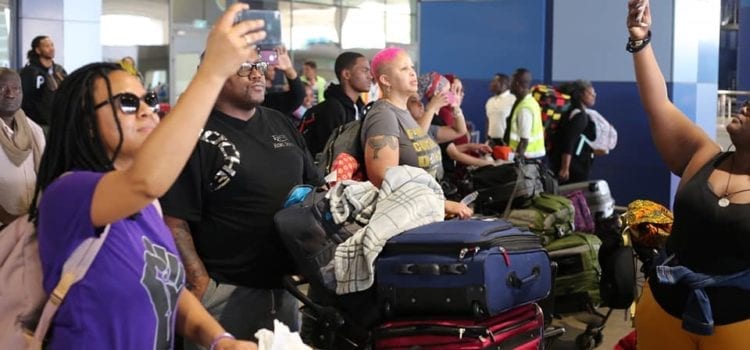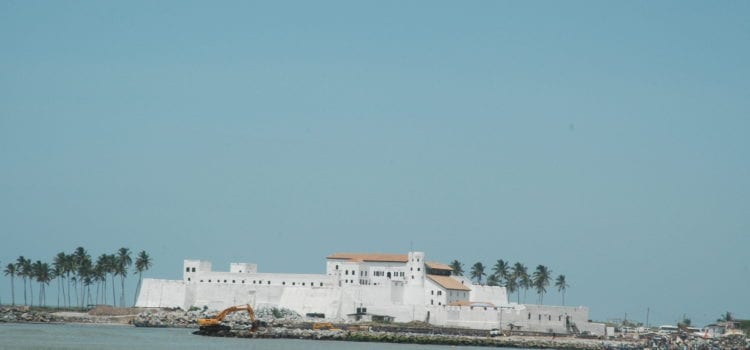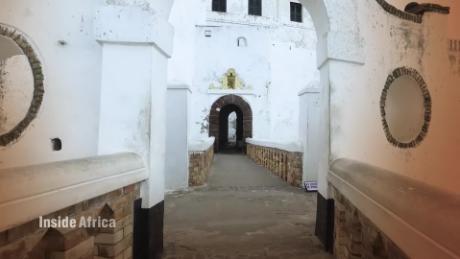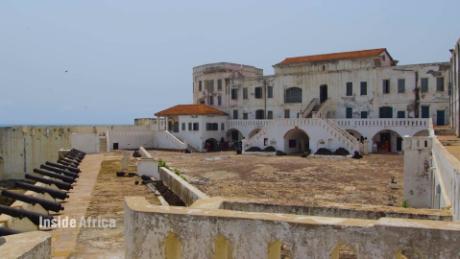France24 Report on Year Of Return: Hundreds of African-Americans resettle in Ghana
France24 has in a report looked at how Ghana is increasingly becoming home to hundreds of African-Americans especially in light of the on-going ‘Year of Return, Ghana 2019’ campaign. The report looks at the lives of some African-Americans who have settled in Ghans over the years. Read and watch the report below.
Ghana was one of the main West African departure points for the transatlantic slave trade. Today, the government has launched a campaign to reach out to the descendants of those Africans who were forcibly removed from their homelands. It has dubbed 2019 the “year of return“. Several hundred people have already put down roots in Ghana, many of them African-Americans. Our colleagues from France 2 report, with FRANCE 24‘s James Vasina.
This article comes on the heels of other reviews published earlier in the year.
Watch the programme/video report prepared by Patrick Lovett and James Vasina below.
Related Articles:
HomeToGo – https://visitghana.com/ghana-listed-in-top-10-trending-summer-destinations-for-2019/
Year Of Return: “Come with an open mind and heart” – Mona Boyd invites Diasporans
Year of Return: African Diaspora in Ghana for Back2Africa Festival
CNN: CNN Travel lists Ghana as place to visit in 2019
About Year of return, Ghana 2019
The “Year of Return, Ghana 2019” is a major landmark spiritual and birth-right journey inviting the Global African family, home and abroad, to mark 400 years of the arrival of the first enslaved Africans in Jamestown, Virginia. The arrival of enslaved Africans marked a sordid and sad period, when our kith and kin were forcefully taken away from Africa into years of deprivation, humiliation and torture. While August 2019 marks 400 years since enslaved Africans arrived in the United States, “The Year of Return, Ghana 2019” celebrates the cumulative resilience of all the victims of the Trans Atlantic slave Trade who were scattered and displaced through the world in North America, South America, the Caribbean, Europe and Asia.
One of the main goals of the Year of Return campaign is to position Ghana as a key travel destination for African Americans and the African Diaspora. In 2019, the events planned throughout the year will serve as a launch pad for a consistent boost in tourism for Ghana in the near and distant years. Beyond tourism, this initiative supports one of the President’s key developmental agendas in Ghana Beyond Aid. We know that tourism can be a leading indicator to business and investment.
We are focused on ensuring that our brothers and sisters have a safe, pleasant and wonderful journey home so they will want to come back, get involved, see the opportunity that exists in Ghana for us to work together and begin to rebuild what has been stolen and lost over the past 400 years.
Inside Ghana’s Elmina Castle is a haunting reminder of its grim past
Source: Tanni Deb, CNN and Segun Akande, for CNN (CNN Africa)
Across Africa, from the north of the Sahara to the West African coast sit many relics of the continent’s early interactions with Europe.
‘A dark history’
See more stories from Inside Africa and share your thoughts with us on Facebook, Twitter and Instagram


 Call Center
Call Center




 Call Center: 0307007100
Call Center: 0307007100